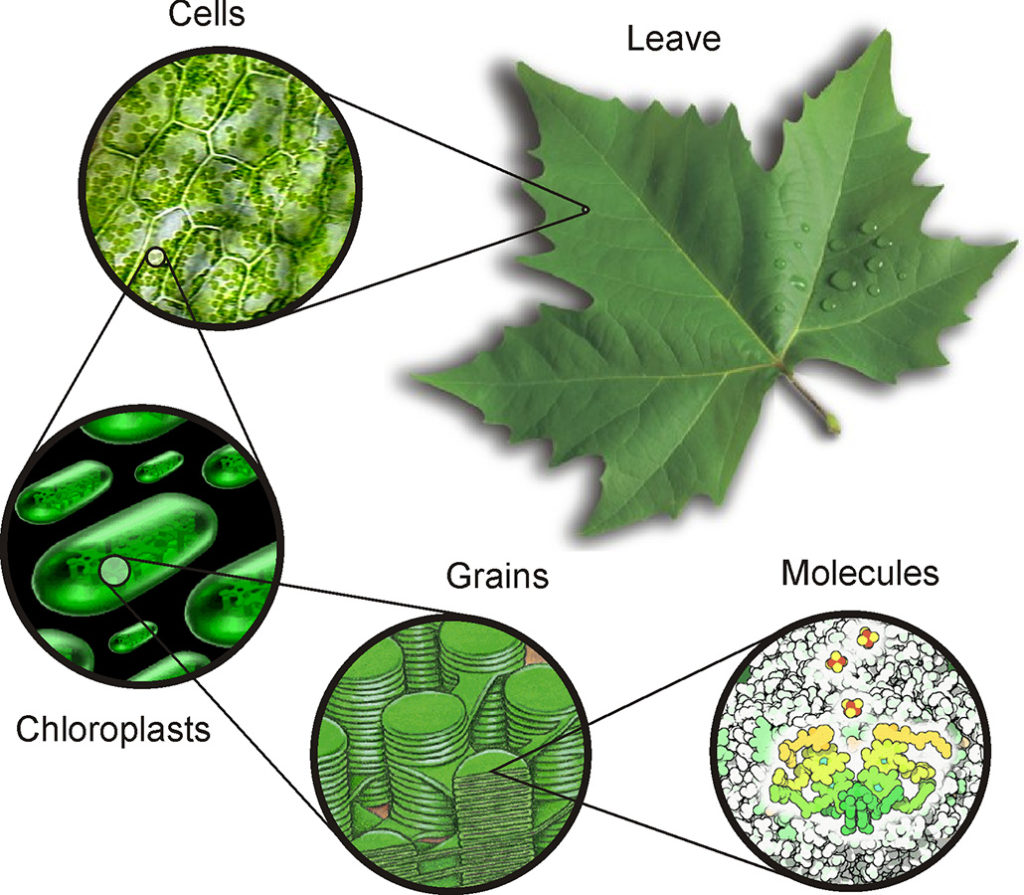Continue from previous page
Molecules in action
Molecules represent the starting point for interpreting the properties of matter and for understanding the intimate essence of the phenomena that occur around us and in us. For example, the phenomenon that allows a tree to use sunlight to produce flowers and fruits is the natural photosynthetic process. To understand how this process takes place (Fig. 5), we need to zoom in, shrinking down to the nanoscale, past the tree (meters), leaves (centimeters), cells (hundredths of a millimeter), chloroplasts (thousandths of a millimeter), grains (ten thousandths of a millimeter), to reach the molecules that, as we have seen, are one millionth of a millimeter (that is, a nanometer) in size.

In plants there are aggregates formed by a certain number of molecules, appropriately assembled and integrated so as to constitute real nanometer-sized devices. The process of converting solar energy into chemical energy is accomplished by these devices (called reaction centers) that are capable of using the energy of sunlight to cause a chemical reaction called charge transfer. This reaction is followed by many others that involve other molecular-based devices and machines and that, in the end, produce the fragrant and nutritious molecules that constitute the flowers and the fruits.
The invisible world of molecules also fills the human body. In our hands and arms, legions of small molecular motors allow us to pick up objects, to turn the pages of a book and to perform a myriad of other movements. In our eyes, light causes structural changes in certain molecules that send signals to the brain; the processing of these signals, carried out by armies of molecular messengers and switches, allows us to recognize the words we are reading and to grasp their meaning. In the meantime, without we even realize it, the invisible oxygen molecules that are contained in the air are captured one by one in the lungs and transported, in all parts of the body that need it, by other larger molecules capable of housing them, which are in the blood of the alveoli.
In other words, all that we are and what we do is thanks to the action of an endless number of molecules, organized in nanoscale devices and machines that we cannot see individually in action, but are working with great efficiency, high speed and stunning precision (Goodsell 2009).


